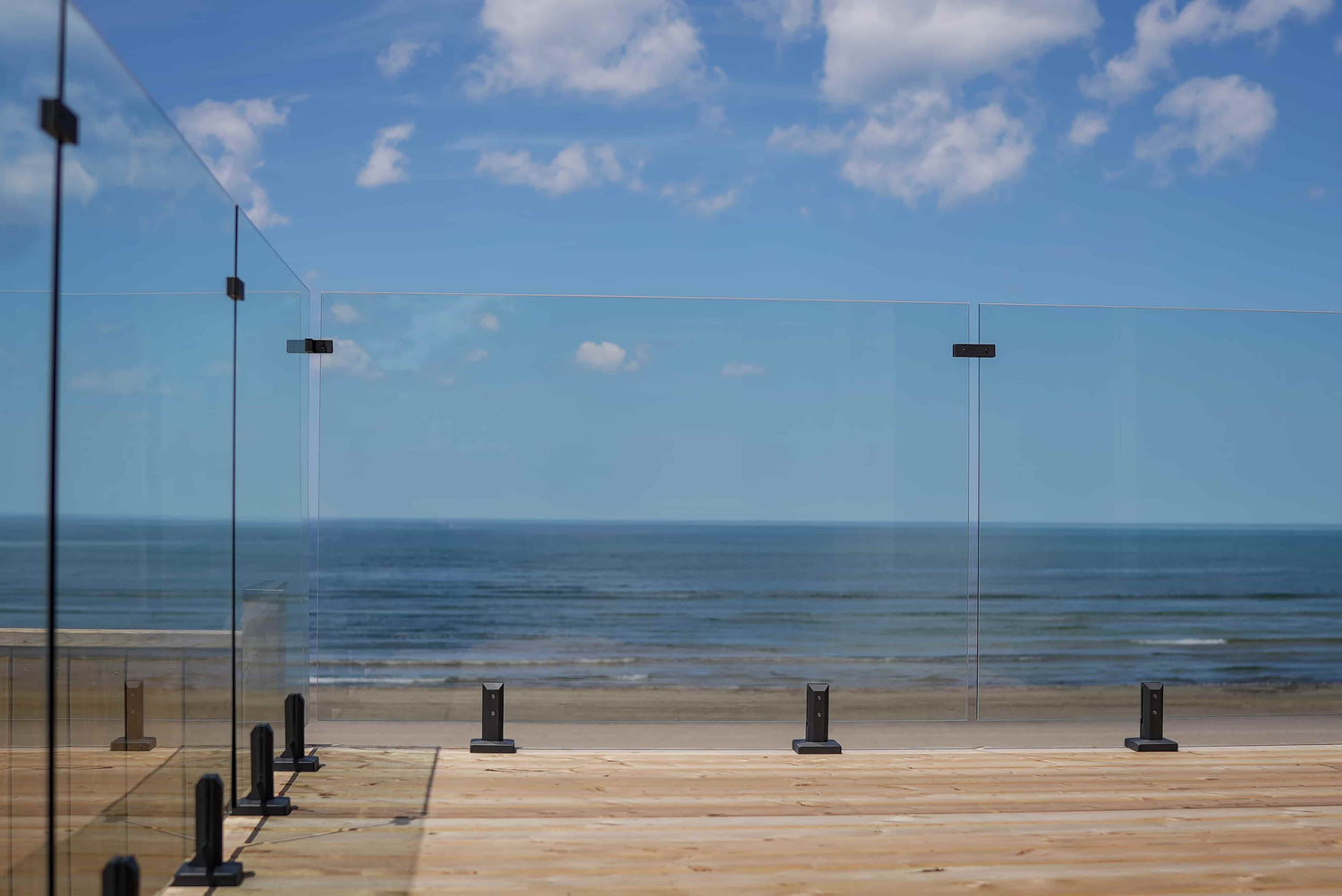Nebraska Building Code for Glass Railings: What Every Homeowner and Contractor Should Know
Glass railings bring a modern, open-air elegance to homes, but in Nebraska, they’re more than just a style choice—they’re a regulated safety feature. Whether you’re upgrading your deck, installing a new balcony, or building a custom home, understanding Nebraska's building code requirements for glass railings is essential. Not knowing the rules could cost you more than just a fine—it could jeopardize the safety and value of your property.
Nebraska has adopted the 2018 International Residential Code (IRC) and 2018 International Building Code (IBC) at the state level, forming the foundation for residential and commercial construction standards. However, municipalities like Omaha, Lincoln, and Bellevue may have local amendments that adjust or expand these base requirements. Therefore, a dual awareness of both state and municipal codes is vital. This guide focuses primarily on residential use, while offering context for commercial applications where relevant.
Nebraska’s Building Code Structure
Nebraska’s statewide code adoption includes:
- 2018 IRC for one- and two-family dwellings.
- 2018 IBC for commercial buildings and multifamily structures.
These codes are updated every few years to reflect new safety findings and construction innovations. While the 2018 versions are the most current at the state level, some local jurisdictions may adopt newer editions, such as the 2021 IRC or IBC. You can check our array of glass railing systems suitable for residential compliance.
Residential Glass Railings: Key IRC 2018 Requirements
Under Section R312 of the 2018 IRC:
- Guards (railings) are required when walking surfaces are more than 30 inches (762 mm) above grade.
- The minimum guard height is 36 inches (914 mm).
- If the guard functions as a handrail (e.g., on stairs), the top rail must be 34–38 inches (864–965 mm) above the nosing of stair treads.
- Openings in the railing should not allow the passage of a sphere 4 inches (102 mm) in diameter.
This means if you’re building a raised deck, porch, or stairway, glass railings aren’t just a design option—they’re required to follow specific dimensional and material standards. Check IRC 2018 Section R312 for the full regulation.
Safety and Structural Standards for Glass Railings
Approved Glass Types
The IBC 2018, under Section 2407, outlines performance criteria for glass used in railings:
- Must be tempered or laminated safety glass.
- Laminated glass must maintain its shape or be supported by a rigid frame in case of breakage.
Load and Impact Resistance
According to both IRC and IBC codes:
- Glass railing systems must resist a concentrated load of 200 pounds (890 N) applied in any direction along the top edge.
- This ensures the system can withstand accidental impacts, leaning pressure, or environmental forces like wind.
- Testing for structural integrity is mandatory—especially for frameless or postless designs, which lack traditional supports.
In residential settings, this becomes particularly important on upper-floor balconies or decks, where a failure could be catastrophic.
Top Rail Requirements
When laminated glass is not used, building codes require a supporting top rail. This rail acts as a safeguard should the glass fail, preventing falls and injuries.
For frameless systems to be code-compliant without a top rail, they must undergo third-party testing and certification proving their ability to withstand required loads and impact scenarios.
The National Glass Association’s safety resources provide clarity on tested materials.
Common Pitfalls and How to Avoid Them
Installing glass railings can be deceptively complex. Here are some of the most common mistakes that lead to code violations:
- Using annealed (non-safety) glass, which is prone to shattering.
- Installing railings too low, especially on sloped properties where measurement reference points can be misjudged.
- Overlooking local code amendments, which may require additional permits or materials.
- Neglecting spacing standards, such as allowing gaps larger than 4 inches that pose fall risks to children.
Avoiding these pitfalls involves not only selecting the right materials but also hiring qualified professionals familiar with both state and local building codes.
Key Residential Glass Railing Standards (Nebraska)
|
Requirement |
Standard per IRC 2018 |
Notes |
|
Guardrail Height |
36 inches (914 mm) |
For walking surfaces >30" above grade |
|
Handrail Height (stairs) |
34–38 inches (864–965 mm) |
If guard also acts as handrail |
|
Load Resistance |
200 lbs. in any direction |
Applied at the top of the guard |
|
Glass Type |
Tempered or laminated safety |
Must prevent fall if broken |
|
Opening Limit |
Max 4-inch gap |
Prevents passage of a 4-inch sphere |
Special Considerations for Local Jurisdictions
Although the state-level codes form the base, several localities in Nebraska, such as Omaha, Lincoln, and Grand Island, adopt their own specific amendments. For example, some cities require:
- Enhanced snow load resistance for guardrails on decks.
- Certification for frameless railing systems.
- Additional inspection steps before permitting.
Before beginning construction, it’s essential to check with your local building department. This step ensures that your design and material choices are fully compliant.
Conclusion
Glass railings in Nebraska must meet both aesthetic and structural standards to be considered safe and legal. With the state’s adoption of the 2018 IRC and IBC, homeowners and contractors have clear guidance on how to design and install compliant guardrails. Whether you’re building new or renovating, make sure you choose the right materials, follow load and spacing rules, and always check local amendments. Explore Nebraska-ready railing solutions that match both code and style.
FAQs About Glass Railing Code in Nebraska
1. Are glass railings allowed for decks in Nebraska?
Yes, as long as they follow IRC 2018 standards regarding height, spacing, and safety glass type.
2. What kind of glass is considered compliant?
Only tempered or laminated safety glass is allowed. Regular glass is a safety hazard and violates code.
3. Do I need a permit for installing glass railings?
Usually yes—especially for elevated decks or major renovations. Always check with your local building department.
4. What if I want a frameless design?
It’s allowed, but laminated glass or a top rail is usually required unless tested otherwise.
5. Where can I get code-compliant glass railing systems?
Visit Glass Railing Store to view pre-approved systems.
Let customers speak for us

Glass Railing Near You
Discover how The Glass Railing Store has been delivering exceptional service to our customers, thanks to our dedicated and knowledgeable team and their love our glass railing products.







